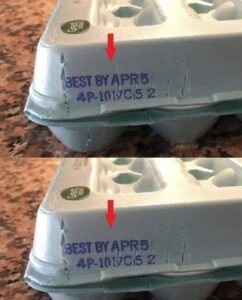Don’t Ignore This Number on Your Egg Carton — It’s More Important Than You Think

Most of us grab a carton of eggs at the supermarket without giving the label more than a quick glance. But hidden on every carton is a number that can tell you exactly how fresh your eggs are — and whether they’re safe to eat.
The code most people overlook
Alongside the expiration date, you’ll find a three-digit code stamped on egg cartons. This isn’t random — it’s called the Julian date, and it reveals the exact day of the year the eggs were packed.
-
001 = January 1st
-
365 = December 31st
For example, if you see “150,” it means those eggs were packed on the 150th day of the year — late May.
Why it matters
Eggs can stay safe for up to 30 days after the packing date if refrigerated properly. By reading the Julian code, you’ll know whether the eggs you’re buying are near the start of their shelf life or close to the end.
This detail became especially important during past salmonella outbreaks, when health officials urged consumers to check both the Julian date and the plant code (a number starting with “P” that shows where the eggs were processed) to confirm whether their cartons were part of a recall.

Choosing the best quality
Beyond dates and codes, egg grading also tells you a lot:
-
Grade AA: The highest quality, with firm whites and tall yolks — best for frying, poaching, or dishes where texture matters.
-
Grade A: Still very good, though slightly less firm — excellent for baking and everyday cooking.
Look for the USDA grade shield, and if possible, opt for labels such as “organic” or “pastured” for eggs from hens raised in better conditions.
The bottom line
Understanding egg carton codes isn’t just about safety — it’s about flavor and freshness. Next time you shop, take a moment to decode the numbers. You’ll know exactly how fresh your eggs are, and your meals will taste better for it.